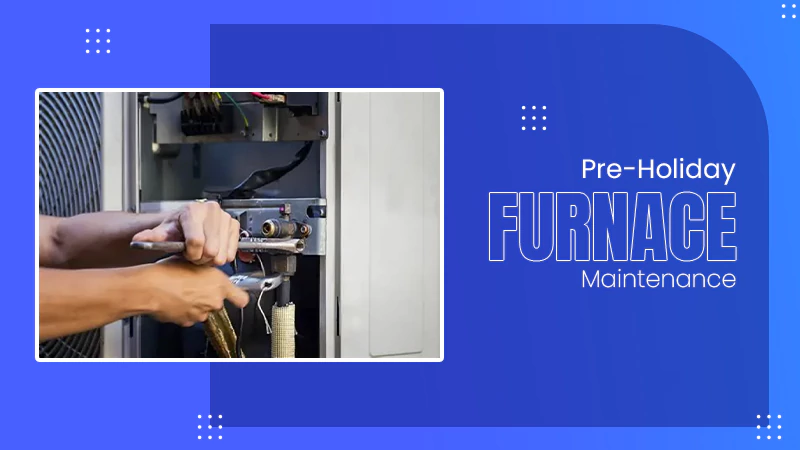
Originating from Southeast Asia and Australia, Hoya plants are those low-maintenance beauties that add a touch of nature to your indoor garden. This unique plant has various names, reflecting its distinct features. They have thick, waxy leaves with star-shaped flowers on them. Popularly known as the symbol of good luck and affection, these plants are beloved for their beauty.
To find out more about these fascinating plants that can bring energy to your indoor garden, let’s closely look at their various types, characteristics, and care requirements.
Hoya Plants Overview
Commonly known as wax plants, wax flowers, or porcelain flowers, they have a cluster of beautiful blooms with trailing vines. Hoyas like bright, filtered light and less water to thrive. This is a naturally surviving plant that doesn’t need much work to grow. However, a little carelessness can ruin the health of the plant. Known for their unique quality and beauty, there is a special Hoya plant for every plant admirer.
| Scientific Name | Hoya Carnosa |
| Popular Name | Hoya Plant, Wax Plant, Wax Flower, Porcelain Flower, Honey Plant, Hindu Rope Plant, Sweetheart Plant |
| Plant Family and Type | Apocynaceae, Succulent, Perennial |
| Native Area | Asia, Australia, Pacific Islands |
| Hardiness Zone | 10-11 (USDA) |
| Size | 12–20 Feet |
| Sunlight | Bright Indirect or Filtered Sunlight |
| Irrigation | Less Amount |
| Soil Type and pH | Well-draining, Slightly Acidic, Neutral |
| Flower Season | Spring, Summer, Fall |
| Flower Color | Yellow, Orange, Pink, Purple, White, Red |
Discover the Wide Variety of Hoya Plants
Hoya has a variety of species, each with its unique characteristics. With bright flowers and shiny leaves, these plants can give your indoor space an exotic look. Some common types of Hoya plants are:
1. Hoya Carnosa

The classic Hoya plant, also known as Hoya carnosa, is commonly found in countries like Eastern Asia and is quite popular in countries like China, Japan, and India. The waxy texture on the leaves of this plant gives it a glossy appearance, making it attractive and unique. This plant stores water in its leaves, which makes it drought-tolerant.
It’s a relatively easy-to-maintain plant with a slow growth rate, making it suitable for indoor spaces. During spring and summer, it produces star-shaped flowers in different colors, like pink, white, and red, enhancing the beauty of its surroundings with a pop of color.
2. Hoya Kerrii

The sweetheart plant from Southeast Asia, Hoya Kerrii, has heart-shaped leaves that symbolize love and affection. It has a moderate growth rate along with thick, fleshy leaves. During warmer months, this heart-patterned flower blooms and embraces its surroundings with fragrant flowers.
3. Hoya Pubicalyx

Originally hailing from the Philippines, Hoya pubicalyx is commonly known as Hoya Royal Hawaiian Purple because of its star-shaped, vibrant pink and purple flowers. This species has relatively fast growth compared to others.
The dark green, oval-shaped leaves of this plant have a hint of silver on them. Their slender stems make it easier for plants to hang down or climb up. It offers a visually appealing look and color addition to any space.
4. Hoya Lacunosa

Hoya lacunosa, commonly known as the honey plant, is specifically from Thailand and Malaysia. It’s a compact plant that thrives well in baskets or pots and has small, thick, and waxy dark green leaves with a fuzzy texture. This plant is famous for its sweet honey-like fragrance flowers, which bloom during the summer, adding an essence of sweetness to any space.
5. Hoya Compacta

Originating from India, the Hindu rope plant, also known as Hoya Compacta gets its name from its long, twisted, and contorted stems, giving it a rope-like appearance. This plant is a good climber and can adapt to be grown on a support or to trail in a hanging basket. The dark green and waxy leaves of the plant add a whimsical touch to an indoor setting.
Master the Art of Growing Hoya Plants
Growing a Hoya plant can be a bit challenging, as they are slow-growing plants and may take a longer time to bloom. It’s more common to propagate them than to grow them from seeds. Here is a guide for you on how to grow these plants in different ways:
Seed
- Collect seeds from existing plant seed pods that develop after the plant has bloomed.
- Remove the seeds from the pods and clean them or soak them in water for a few hours for better germination.
- In a well-draining soil, mix perlite, vermiculite, and peat moss.
- Plant the seed lightly on the soil surface and tap it down, but don’t bury it too deep. Place the container in a humid environment.
- The germination process can take some time; in the meantime, keep the soil moist and maintain the temperature between 21 and 27 °C.
- Once it sprouts, keep it in indirect sunlight and water it often, but don’t waterlog it.
Propagation
- Cut a stem that is mature and has at least one leaf node.
- Remove extra leaves from the bottom part and let the end of the stem harden to avoid rotting when the cutting is planted.
- Plant the cutting in a well-draining potting mix and add peat moss and perlite.
- Water the cutting and place it in indirect sunlight.
- In a few weeks, the cutting will start developing roots.
- Once roots are developed and strong, you can transplant them into a bigger pot.
- Keep the plant in a humid environment and water the plant when the top inch of soil feels dry.
Maximize Your Hoya Plant Flower Production

Hoya plants generally bloom in the warm summers and late spring. To promote flower growth, place them near a window where they can receive indirect or filtered sunlight. Do not overwater the plant; it can lead to root rot.
Let the topsoil dry out first. Fertilizing your plant can contribute to their overall health, but remember to dilute the fertilizer to avoid overfeeding. Some Hoyas bloom multiple times a year, showing star-shaped flowers in various colors and a pleasant fragrance, especially at night.
When it comes to boosting your Hoya plant flower production, it is also important to maintain your plant’s overall well-being. Let’s dig deep into ways to keep your plant thriving.
Essential Tips to Enhance the Growth of the Hoya Plant
These are low-maintenance and effortless plants to grow. By remembering a few key points, you can see your Hoya plant thriving and blooming naturally.
1. Sunlight:
Hoyas thrive in bright, filtered sunlight. Keep them near a window to make sure they receive indirect light but avoid direct sunlight as it can fade their color.
2. Watering:
Avoid overwatering your Hoyas. When the top layer of soil dries out, it is the right time to water the plant. These are drought-tolerant plants and store water in their waxy leaves. They do not require too much water to thrive and survive.
3. Soil:
Using a well-draining soil mix is most essential for Hoya’s healthy growth. A blend of peat moss, perlite, and orchid bark provides good aeration and drainage to the plant and also helps it prevent root rot.
4. Temperature and Humidity:
Keep the Hoya plant at room temperature, between 15 and 27 degrees Celsius. Higher humidity levels are beneficial for the plant’s growth. You can use a misting or humidity tray to enhance humidity. During the winter, avoid placing the plant near cold drafts or heaters. Maintain a consistent temperature so that the plant can stay healthy and happy.
5. Fertilizing:
Feed your Hoya plant with a water-soluble fertilizer to promote its growth and health. Apply the fertilizer every 4–6 weeks to provide the necessary nutrients for the plant’s overall well-being.
6. Potting and Repotting:
Put your Hoya plant in a pot with drainage holes to avoid overwatering. Every 2–3 years, repot your plant when it outgrows its current pot to give it more room to grow and thrive. Spring is the ideal time for repotting because the plant is actively growing during this season.
7. Pruning:
Regularly prune your Hoya plant to develop branching, which leads to increased flower production and also helps maintain the shape and size of the plant.
By following these tips, you can boost the growth of your plant. Now, get ready to know some common issues you might encounter and their solutions to keep your Hoya plant healthy.
Hoya Plant Common Issues and Solutions

Hoya plants can add a tropical and unique touch to any space, but as we know, everything that glitters is not gold. While these plants are unique and beautiful, they also require care and attention for growth.
1. Toxicity
This species is toxic to pets if consumed. To safeguard your pets, keep the plant away from their reach, especially pets like cats. This will prevent potential harm and ensure a safe environment for both your plants and pets.
2. Leaf Drops
Leaf drops in Hoya plants can be caused by various factors, like overwatering, underwatering, sudden temperature changes, pests, or diseases. It’s necessary to find the root cause and address the issues sincerely.
3. Limited Flowering
Although Hoya plants produce captivating flowers, they don’t usually bloom often. Patience is the key, as you may have to wait until summer or spring to witness them bloom.
4. Sensitive to Overwatering and Direct Sunlight
Hoya plant roots have the potential to rot if exposed to waterlogging. So, let the soil dry before watering them. Additionally, direct exposure to sunlight can affect the growth and fade the color of the plant. It’s advisable to keep the plant indoors or near a window to maintain its health.
5. Vining habit
Hoya plants are good climbers and hanging plants that can become long and leggy if not pruned regularly. Due to insufficient daylight, they may become lanky and straggly. To avoid this, place them near a window to promote bushy growth, as indirect sunlight is ideal for them. You can also consider pruning to encourage growth.
6. Pests
Pests like spiders, mites, aphids, mealy bugs, and scale insects can harm Hoya plants by damaging the plant and feeding on its sap. This can lead to issues like wilting and leaf drop. To prevent this, provide them with regular inspections and proper care.
7. Slow Growth
Known for their slow growth rate, people who want their plants to grow quickly and fill out space may find Hoya plants to be problematic. These cute little creatures require patience, which may not meet the expectations of those looking for fast-growing plants.
8. Leaf Blackening
Bacteria, fungal infections, sunburn, or overfertilization can cause Hoya plant leaves to turn black. Taking proper care and avoiding watering the leaves can help you prevent leaf blackening and maintain their appearance.
9. Wilting and Stem Dieback
Issues like overwatering, underwatering, pest infestations, diseases, or physical damage can cause wilting and stem dieback in Hoya plants. Adjusting water levels, addressing pest problems, trimming affected parts, and improving growing conditions can help you prevent wilting and further dieback.
Hoya plants can make beautiful indoor plants. Although they have a slow growth rate and some issues, regular inspections and proper care can promote their overall health.
Is Hoya a good indoor plant?
Yes, Hoyas are great indoor plants. Famous for their waxy leaves and star-shaped flowers, these plants are low-maintenance and effortless to grow.
Do Hoyas prefer sun or shade?
Hoyas prefer indirect sunlight. Too much direct sunlight can burn them and fade away their color. To keep them happy, it’s best to provide them with filtered light.
What are the benefits of Hoya plant?
Like great indoor plants, they also have beautiful waxy leaves and star-shaped flowers, which add a tropical and exotic look to any space.
Do Hoyas climb or hang?
Climbers by nature, Hoyas have vining growth, and they tend to climb or trail as they grow. It depends on you; some people let them climb, while others let them hang from a hanging basket.






